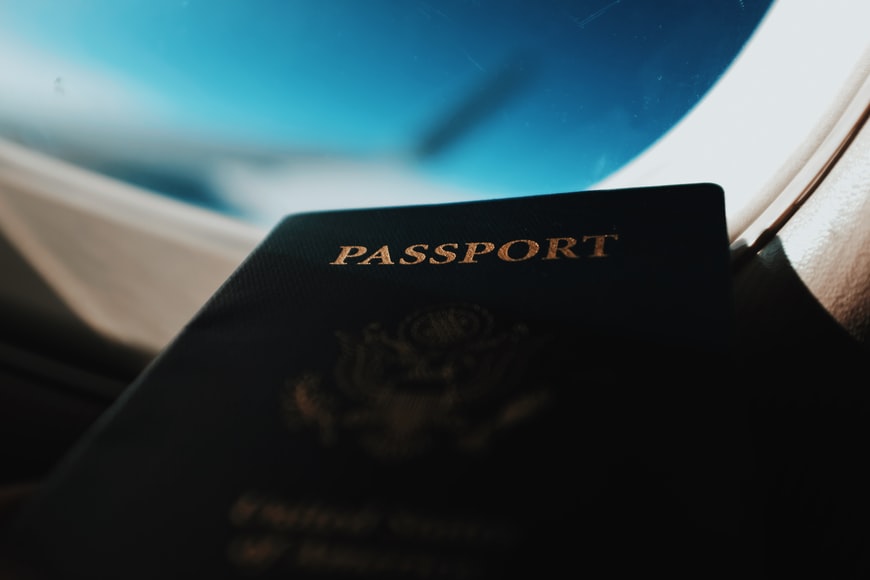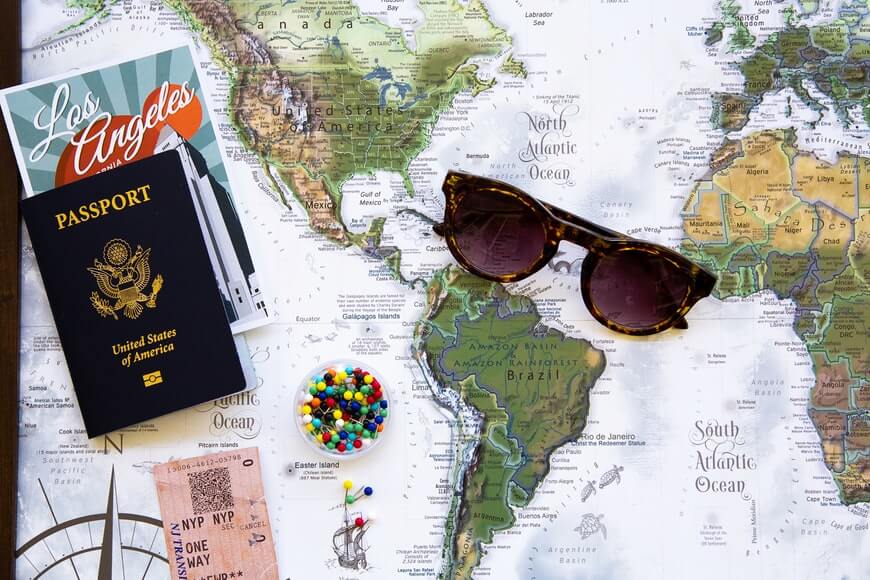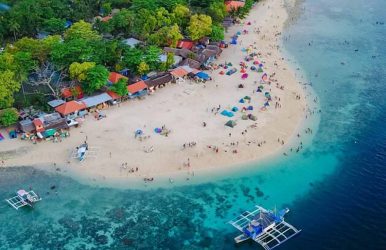Luang Prabang Waterfall Guide: How To Visit Kuang Si And Other Waterfalls In Luang Prabang?
BY
Sibashree
Nov 5, 2025
I was relaxing after a bath at the Kuang Si Falls and suddenly, an electric blue dragonfly came to visit me. It sat on my knees for some time, and then came another. Within 15 minutes or so, I spotted hundreds of dragonflies making the trees appear blue.
I was immediately transported to my childhood days when chasing a dragonfly or finding one with the most unique colors was a fun game. Suddenly, my guide called me and said, “Let me show you something unique.” He took me to the “Do Not Enter” board.
He asked, “Want to go there? There is a secret pool.” I said, “Why not?” I found out a milky-blue calm basin. Local teenagers were hanging out there, and they were eating sticky rice from banana leaves. They offered us some, and it was the best sticky rice I ever tasted.
Food in Luang Prabang is magical, just as is the Mekong River, temples, and Buddhist culture here.
While coming back, my guide handed me a plastic bottle. I asked him, “What to do with it?” He said, “Fill the bottle and take the water home. It carries blessings.”
Then, as I came down, I suddenly smelled the aroma of lemongrass and grilled chicken. I insisted. So, my guide had to take me to the local stalls. I had the best skewers there, and they tasted even better as I was hungry after hiking to the waterfall and having a bath.
The skewers were a little black on the edges, and that burnt flavor did the trick for me. Further, the aunty selling the skewers asked me to try the chili dip she had made. It was Fire and tears rolled down my face. She was so embarrassed! She gave me coconut pancakes to eat.
My visit to the waterfalls in Luang Prabang is filled with such amazing stories. In this blog, I will share them and talk about the best waterfalls in Luang Prabang, how to reach them, their spiritual significance, opening hours, entry fee, and everything you need to know.
What Are The Best Waterfalls In Luang Prabang?
Recently, Travel + Leisure has picked the Kuang Si waterfall as one of the 21 most beautiful waterfalls in the world in 2025. This recognition further enhances Laos's international tourism profile.
It is just an hour’s drive from Luang Prabang, and its stunning blue waters and turquoise pools formed with it, create the most dramatic landscape.
However, Kuang Si is not the only waterfall you will find in Luang Prabang. You must also explore the Tad Sae Waterfall, Tad Thong Waterfall, Hoi Khua Waterfall, and Dheva Waterfall.
1. Kuang Si Waterfall
When I reached Kuang Si waterfall, I heard the monks' chants from the nearby Buddhist temple. Within an hour, the scenario changed completely, and the roar was so much that I could not hear my own voice.
Also, on my way back, my tuk-tuk driver was saying, “The old Kuang Si was way wilder, Ma’am. Its water has blessings.”
How To Visit Kuang Si Waterfalls In Luang Prabang?
Taking a tuk-tuk or a bike is the best way to reach Kuang Si Waterfalls from Luang Prabang. It is located 30 km south of Luang Prabang. The journey takes around 45 minutes.
Here are the estimated costs of transport options and the expenses.
Mode of TransportEstimated CostTuk-tukAround 60000 KIPMinivan Tour250.000 KIP/ Per GroupMotorbike Rental100,000 KIP/dayPrivate Car250,000–300,000 KIP
What Is The Entry Fee And Hours Of Kuang Si Waterfall?
The waterfall remains accessible from 8 AM to 5:30 PM. For the locals, the ticket price is Laotian 20,000k/person. The ticket is free for visitors below 12 years of age. Furthermore, for foreigners, the ticket price is 60,000k/person.
What Is The Best Time To Visit The Kuang Si waterfall?
The dry season from November to May is the best time to visit Kuang Si waterfall. These months are ideal for swimming in the clear turquoise water of the pools. You can also go hiking and explore the nearby bear rescue center and butterfly park in these months.
Furthermore, these months are ideal for photo opportunities.
However, if you want a quieter experience, June to October is the ideal season. Fewer tourists visit the waterfall during these months. However, the water becomes muddy due to heavy rainfall.
Local people believe that this water carries power.
What To Expect At Kuang Si Waterfall?
Swimming pools
Bear Rescue Centre
Jungle trails
Picnic areas
You cannot walk around the pools or waterfall with your shirts off or in bikinis. It is considered crude and does not go well with the local culture.
2. Tad Sae Waterfall
With an elephant park nearby, Tad Sae Waterfall is a quieter alternative to the Kuang Si Waterfall. The decks crisscrossing the water make the visual all the more dramatic.
How To Visit Tad Sae Waterfall In Luang Prabang?
To visit the Tad Sae Waterfall, you have to take a short trip out of town. Then, you need to take a trip down the river in a traditional long boat.
It is a 14 km trip from the town to the long boat launch area. Then, the boat ride is 8 minutes long. The cost of the tuk-tuk ride is around 150.000 kip.
Furthermore, the boat ride will cost around 25,000-35,000.
What Is The Entry Fee And Hours Of Tad Sae Waterfall?
The ticket price for Tad Sael waterfall is Laotian 15,000 KIP for locals. Tickets are free for children under 8 years old. For foreigners, the ticket price is 30000 KIP.
The waterfall remains open from 8 AM to 5 PM.
What Is The Best Time To Visit The Tad Sae Waterfall?
August to October is the best time to visit the Tad Sae waterfall. From February to July, the waterfall remains almost dry.
What To Expect At Tad Sae Waterfall?
The boat ride across the Nam Khan River felt like a time-travel for me. The Nam Khan river cuts through fog and jungle that smells like lemongrass and diesel. I also saw kids paddling in plastic tubs, laughing at me while my longtail boat sputters by.
Another fun thing I noticed is the monkeys near the top pools. Locals believe that these monkeys were the spirits who guarded the waterfall. Also, I saw some local visitors leaving a few grains of sticky rice on the rocks for good luck.
Tad Sae Waterfall is great for family picnics and boat rides.
3. Tad Thong Waterfall
View this post on Instagram A post shared by Кирилл Дерябин (@deryabinkirill)
The spring-fed Tad Thong waterfall emerged before my eyes after a 45-minute jungle walk. The walk starts from a point, around 6 km outside Luang Prabang.
Today, it stands in almost abandoned condition, and the hiking trails and bridges are nonexistent in several places.
How To Visit Tad Thong Waterfall In Luang Prabang?
You can easily reach the hiking starting point by tuk-tuk, car, or bike. The tuk-tuk price will be around 800,000 KIP.
What Is The Entry Fee And Hours Of Tad Thong Waterfall?
The Tad Thong Waterfall remains open from 8 AM to 5 PM. The entry fee is around 20000 KIP per person.
What Is The Best Time To Visit The Tad Thong Waterfall?
From July to January, or the rainy season, is the best time to visit the Tad Thong Waterfall. The waterfall remains full and active in these months, and you can photograph the most dramatic visuals.
What To Expect At Tad Thong Waterfall?
Tad Thong is not as massive as Tad Se, nor does it have the grandeur of the Kuang Si Waterfall. However, visiting Tad Thong felt like finding a precious old book under a heap of dust.
Throughout the jungle walk, butterflies kept fluttering around, and the silence echoed through the rocks, making me feel a little cold after some time.
Lesser-Known Waterfalls: The Hidden Gems Of Luang Prabang
View this post on Instagram A post shared by Bui Nhat Quang (@eziography__)
Located near the Green Jungle Park, Hoi Khua Waterfall is a powerful waterfall with a height of 100 meters. Along with swimming in the crystal clear pool formed by the waterfall, you can also relax inside the open-air huts at the Green Jungle Park.
Hoi Khua Waterfall also has an interesting lore associated with it. It is said that locals once took shelter behind this waterfall to protect themselves from the approaching soldiers. However, what happened to them is a mystery to date.
Are The Waterfalls In Luang Prabang Accessible? Summarizing The Accessibility Rating Of The Waterfalls
Have a look at the table below to see which waterfalls are accessible and which are not.
WaterfallWheelchair AccessStairsSuitable for KidsKuang Si✅Moderate✅Tad Sae❌ (boat only)Few✅Tad Thong✅Minimal✅Hoi Khua✅Flat terrain✅
What Is The Cultural And Spiritual Significance Of The Waterfalls In Luang Prabang?
The waterfalls in Luang Prabang have many fascinating stories and secrets. I am sharing a few as I heard from my local guide and a Kuang Si waterfall ranger.
1. The Golden Deer Legend Of Kuang Si Waterfalls
Kuang Si in the local language means (Kuang) Deer and Si (Dig). Stories have it that a wise man chose this spot and started digging into the earth to summon water. A golden deer made its home beneath the rock where the waterfalls flow now.
The story suggests a harmonious bond between humans and animals. Furthermore, the golden deer is a common character in Southeast Asian spiritual and religious stories. It has a vital role to play in the Ramayana, and we get the mention of the golden deer many times in the stories about the previous lives of Lord Buddha.
In addition, the story has given the waterfall a distinct cultural identity cherished by the locals. So, today, the Kuang Si Waterfall is more than a waterfall with a grand physical beauty.
Mr. Boun, a Kuang Si Park Ranger, told me, “We protect the forest and teach kids about the golden deer legend. Kuang Si is sacred to us.”
2. Waterfalls In General Have A Connection With Buddhism
Waterfalls in Luang Prabang are mostly located near the temples. The water from these falls is also used in cleansing rituals conducted by temples and monks.
Furthermore, offerings are made to these waterfalls during Pi Mai Lao or the Lao New Year.
3. Bear Rescue Center’s Cultural Role
The Tat Kuang Si Bear Rescue Centre is more than a tourist attraction in Luang Prabang. It is an important center for the implementation and education of the local conservation efforts. The center also raises awareness about illegal wildlife trade.
Furthermore, many locals consider black bears sacred.
4. Butterfly Park Near Kuang Si
You cannot miss the Butterfly Park located within walking distance of the Kuang Si waterfall. This park is peaceful with colorful butterflies fluttering around.
Butterflies have deep symbolism in Buddhism. These lively creatures teach us the art of letting go and how we can evolve and transform.
5. Caves Behind the Falls
The hidden caves behind the upper tier of the Kuang Si Waterfalls are a telltale of the rich geological history of the region. These caves are missed by most visitors. So, these are ideal for a short meditation period or spending some moments of introspection.
Cultural Etiquette Tips For Foreigners Visiting Luang Prabang Waterfalls
Some areas and pools near the waterfalls are considered sacred, and they are reserved for religious and spiritual activities. Conde Nast Traveller says, “Luang Prabang’s waterfalls offer a spiritual escape into nature.”
So, swimming or access to those areas is not allowed. So, you have to adhere to these norms.
There are many other dos and don’ts you need to follow while exploring the waterfalls of Luang Prabang.
Dos ✅Don’ts ❌• Dress Modestly.• Wear a sarong or a towel over your swimsuit when walking around. • Seek permission from the locals before photographing them. • If a sign says “No Swimming” or “Do Not Enter,” respect it. These rules often protect sacred zones, wildlife, or fragile ecosystems.• Locals value quiet and respectful behavior, especially around sacred sites. Ensure children don’t climb on statues, splash excessively, or disturb wildlife.• If invited to join a blessing or offering ceremony, observe first, follow others’ lead, and avoid interrupting or asking too many questions during the ritual.• Using shampoos or soaps while bathing in the natural pools. • Touching the monks or offering them money directly. • Playing loud music or expecting a party vibe at the waterfalls. Waterfalls are often used for meditation, rituals, and family gatherings.• Littering is deeply frowned upon. Waterfalls are natural and spiritual spaces, and locals expect visitors to treat them with reverence.
Secrets And Lesser-Known Facts You Did Not Know About Luang Prabang Waterfalls
The turquoise color of Kuang Si’s pools comes from the calcium carbonate particles of the limestone rocks. These particles reflect sunlight. Thus, create the iconic blue shade.
This turquoise blue color looks the most beautiful during the dry season.
Also, locals often bring picnic baskets and spend entire afternoons at waterfalls. Vendors near Kuang Si sell grilled chicken, sticky rice, and jaew bong for this purpose. It’s a cultural experience and the locals are welcoming enough to often ask the tourists to join them in.
Food And Dining Near The Waterfalls In Luang Prabang
You can visit the following areas for food and dining near the waterfall areas.
AreaFood And Dining SpotsLocationKuang Si AreaKuang Si Kitchen and ResortClick HereTad Sae AreaMainland StallsLocal restaurants in the mainland boat landingTad Thong AreaThe Living Land FarmClick Here
What Are The Photography Tips For Visiting The Waterfalls In Luang Prabang?
The beautiful waterfalls of Luang Prabang are ideal for photography, and they are quite popular on social media. You need to keep in mind the following instructions for photography at these waterfalls.
Best TimeGears RequiredInstagram Spots • Daily: Golden Hour: 7:00–8:00 AM and 4:30–6:00 PM• Annually: Rainy Season• Wide-angle lens• Tripod for long exposure• ND filter for silky water effect• Kuang Si’s top tier• Bamboo bridge near Tad Sae• Jungle trail at Tad Thong
So, visit the Luang Prabang waterfalls and have the best moments exploring the mighty cascades and soaking in their cultural and spiritual vibe.
Luang Prabang Waterfall Guide: Frequently Asked Questions (FAQs)
Here are the frequently asked questions and answers about the Luang Prabang waterfall guide.
1. Can I Swim In Kuang Si Falls? Yes, you can swim in the designated pools of Kuang Si Falls and other waterfalls. However, some pools are reserved for spiritual and religious activities. So, swimming is not allowed there. 2. Are There Lockers Or Changing Rooms? Yes, there are changing rooms near the Kuang Si waterfall entrance. However, you will not get a locker. You have to carry a dry bag and keep your valuables there, or if you are traveling in a group, you can enjoy the swim in turns. 3. Is Tad Sae Open Year-Round? No, the Tad Sae waterfall is not open year-round. August to November, or the rainy season, is the best time to visit the waterfall. It does not have water in the dry season (February to July).














